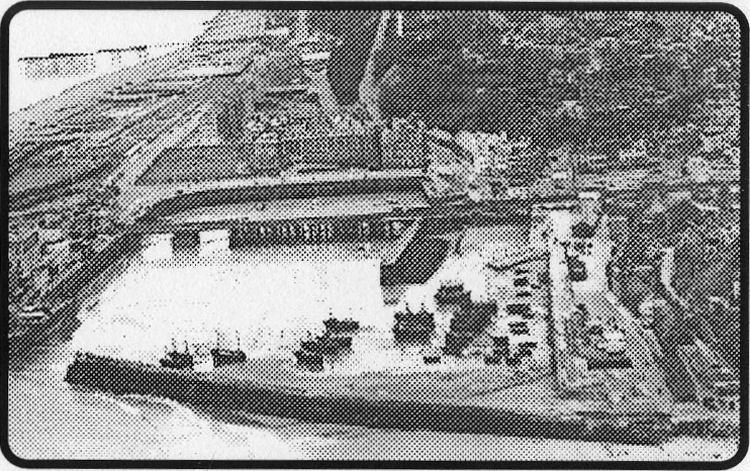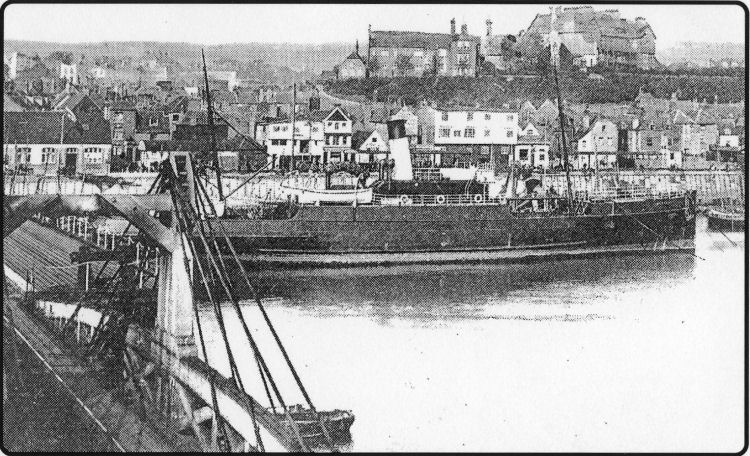
Published 9 November 2000
Dear Maggie!
COMING from a family of railwayman going back at least three generations
Fred Taylor, who Is In his early 80’s, has no doubt what lies behind the
growing number of railway accidents. The rot all started he says when Lady
Margaret Thatcher and Lord Beeching decided to “Improve” our ageing railway
system and privatised It
They went too far, he said. And, in the process, they made many experienced
and conscientious railway workers redundant.
“It is criminal the way they have cut down safety checks on the tracks to
once a week,” he declared angrily.
And, it is no wonder, he says, that there are so many accidents due to
broken rails.
The system of laying tracks with 600ft long lengths of rail welded together
is seriously flawed ana bound to lead to more breakages, he says.
It was a big mistake to adopt the German method, he says.
The old railwaymen knew it would lead to more broken rails.
The rails were laid with a gap of about two feet between each length and
then, before they were welded together with special steel, he said, they
were stretched by machine until there was a two to four inch gap between
them.
The result was that they were always under stress.
In his day, when he was foreman, a gang of men would be responsible for a
stretch of track and would inspect that line every day for any problems.
That was when lengths of rail
were only 60ft and there was a small gap between lengths to allow for
expansion in warm weather.
“And a broken rail in those days didn’t mean closing a stretch of line for a
week.” he said, commenting on the recent havoc on the tracks as hurried
safety inspections and repairs were carried out.
“The railway went on the rocks after the measures taken by Maggie Thatcher
and Lord Beeching," he declared.
“Cutbacks were far too drastic.
“And now there are too many chiefs, in their yellow coats, and not enough
Indians, to quote an old expression,” he commented.
Dedicated
Fred Taylor, who used to live in Brockman Road, Folkestone, but now lives in
Kennington, Ashford, also believes some of the railwaymen of the past were
more conscientious and dedicated to the railway system, once one of the
world's leaders.
Fred’s grandfather was 50 years on the railways, finishing up an inspector
at Paddington Station, his office under the well known clock, a feature of
the old building.
And Fred’s father followed him into the railways, as an electrician while
two great uncles were both engine drivers, one on the old L.M.S. Railway,
the other on the London and North Eastern Railway.
Fred himself, trained as an engineer, worked for the L.N.E.R. for 20 years
and then, from 1957, for the Southern for 15 years.
“It was over 40 years ago that we heard about the long rails coming,” said
Fred, who served in the Royal Air Force in North Africa during the Second
World War.
“Everyone said there would be a lot of breakages. And they have been proved
right,” he said.
He also has a theory that the process of sub-contracting railway jobs, like
track-laying and maintenance, leads to a lower standard of work.
“When I worked on the railway the men were proud of our railways. The work
was almost a religion with many of them,” he said.
“The worst thing they ever did was to break up the railways,” he said.
Fred was brought up in Folkestone in the 20s and 30s and went to Christ
Church School, once known as the Gun School, which doesn't exist any more.
He joined the RAF in 1937 becoming a senior NCO cook and served on many RAF
stations, Including the Central Flying School, Bomber Command and was then
posted to the Desert Air Force, with 92 Squadron, and was there during the
epic Battle of El Alamein which routed the German Panzers and proved the
turning point of the war, he said.
Fred, has a son, John, living in Australia and three greatgrandchildren.
Mr Taylor has survived both of his brothers, who also served in the RAF, one
a pilot and the other
an engine and airframe fitter.
At one time, he says, there were five members of his family serving in the
Air Force.
Memories page reader Miss Katharine Marshall writes from St Leonards Road,
Hythe, to which she moved last year, to say she is very keen to learn
something of the history of her home, at No. 11.
“It is in a terrace of six, and a neighbour told me the terrace dates from
around 1840.
“Interestingly, she said that the terrace was built as a cottage
hospital, with the two three-storey houses acting as the hospital, and the
four two-storey houses providing nurse accommodation."
But, says Miss Marshall, “I have not been able to find any information about
a hospital in St Leonard’s Road in the books and street directories I have
looked in, but am very keen to research this area.”
She adds that she has consulted Hythe Haven, by Duncan Forbes, and 20th
Century Kelly's directories and says she would be grateful for news of any
other books or sources she could try.
A RAILWAY steamer in the inner harbour at Folkestone, a picture postcard
view of 1914 which was shown to me by a Dover friend, Mrs E Maynard,
descended from Dover baking families. On the left is the old swingbridge
which someone told me was the first of its kind in the country. Top is an
aerial view of the port owned by Edwin Lilley.


 |
|
1900
Question of convenience took too iong said Felix.
•f QftftWRITER Felix was complaining about Xt/Uwthe time it was taking
to build a public loo at Beach Street - nearly six months. Had it been
put out to contract it would have been completed much sooner, he
declared. Folkestone was surely the birthplace of the Rip Van Winkle
family, said a regular visitor, who complained of the town's apathy,
blindness and ignorance, as a resort, seemingly interested only in
making as much money as possible out of visitors and doing little to
cater for their needs. The local council also received a verbal
drubbing, being accused of being narrow-minded and indulging in frequent
squabbles! Too few came forward to take an interest in the town, he
wrote. Sadly the writer wished to remain anonymous. Felix wrote at
length about cruises of the local steamer Myleta (master Capt Dane, with
Steward Davis and Chief Engineer Smith.) Having already made a two-hour
trip down to St Margaret's Bay he embarked on a mini cruise westwards to
a point near Dymchurch and back, describing in detail the landmarks to
be seen from the sea. the names of property owners along tho way. and
throwing in a little history.
|
|
1925
Grave robbers condemned as nothing but ‘ghouls’.
«| qa j” ANGER was growing in the town over the despicable robbing of
recently dug graves. The thefts were particularly distressing to those
recently bereaved who included the family and sorrowing fiancee of
Herbert George Copping, hero of a rescue of a young boy from drowning in
a Warren pond, and also the family of a recently deceased local
tradesman. In both these cases growing flowers, planted on the graves,
had been deliberately cut on a couple of occasion*. Felix '—id the
thieves were nothing but ghouls, and the thefts were an outrage. There
was a large gathering of masons for the consecration of a Romncy Marsh
Lodge (No 4743.) Master designate installed was Brother S.G. Keeler. St
Peter's, the fishermans' church, was in need of urgent repair and it
launched an appeal to raise 4,000 shillings to do the work, its first
appeal in many years. A Hii.jIU reader after reading in the paper of the
doings of a Folkestone smuggling craft Happy Go Lucky, back in 1786.
looked back at a historic incident 150 years before. This was when
Folkestone sailors during the Siege of Gibraltar (Sept 1779 to Oct 17UJ)
defied Spanish warships to get despatches through. They manned the
privateer Buck of Folkestone, under its master Capt Fagg.
|
|
1950
Folkestone Rowing club toasts best ever year.
1 Q Eft FOLKESTONE Mayor Alderman WJ JLv/OvRule started a fund to raise
cash to buy a new racing craft for the town's Rowing Club after their
highly successful racing season. Never before, in its 98 year history,
had the club been so successful. The climax was winning the N.A.R.A. All
England Fours Championship for the third year running and the fifth time
in the history of the championship In addition they won five other
championships and collected 17 more trophies. The Mayor said they had
brought great credit to the town. Well over 500 entries were received
for the 38th Folkestone Sea Angling Pier Festival, to be held in
conjunction with the National Federation of Sea Anglers event. Anglers
from France and coachloads of anglers from around the coast as far west
as Southampton came to fish in the contest. Champion ploughman of Romney
Marsh in 1950 was Mr A Boorman, of Apple Tree Cottages, Burmarsh Corner,
Dymchurch, who worked for Capt Frank Fehr, of Dymchurch. He walked off
with three trophies at the ploughing match held by the Romney Marsh
Ploughing & Cultivations Society, the Frank Fehr. the Sir Edward Hardy
and Peacock Cups, plus other prizes, including a silver tankard.
|
|
1975
Double glazing and sound insulation for A20 homes.
Q“7C FLOODING and fear of flood damage had aL«7 I 3 for years been a
problem in Shepway and 25 years ago the high level of water in the Royal
Military Canal renewed those concerns. People's fears were exacerbated
by Shepway District Council which deferred improvements to the canal
sluice gates at Seabrook and to pumping equipment. This was despite the
fact homes at Orchard Valley. Hythc had twice been flooded the previous
winter. Pennypot Residents' Association urged the council to press on
with the si hi me. Pumping equipment was to lower the level of water in
the canal quickly. Pennypot homes 300 of them, adjoined the canal but
some 1,000 homes were directly affected by the Council decision. The
association pointed out that sometimes debris blocked off the sluice
gates and they couldn't be used. Kent River Board, which had previously
looked after the canal used to lower the level of the water on the onset
of winter in anticipation of emergencies and this had prevented trouble.
With a £342.000 scheme planned to bring the A20 up to dual carriageway
standard the Council was writing to Hill Road area residents to tell
them they could get 100''<i grants towards double glazing and special
ventilation because of extra noise. It was predicted levels would exceed
an average of 68 decibels over a continuous 18-hour period. |
|



